| revcom.us
The Planet Cannot Survive Four More Years of Trump!
Part 3: Oceans —
Dead Zones, Garbage Patches and Heat Waves
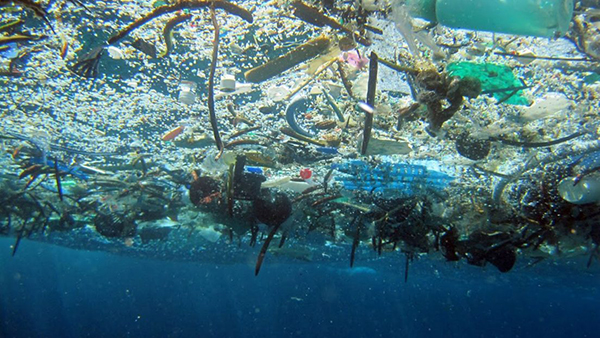
Part of the Great Pacific Garbage Patch (Photo: Wikimedia commons)
Editors’ Note: We received the following from a reader—the third and final in a series on the destruction of the planet’s ecosystems that has been brought to new levels of devastation and danger under the Trump/Pence regime.
Parts I and II can be found here and here. It is no exaggeration to say that if the Trump/Pence regime stays in power for four more years, the damage they inflict on the planet and its ecosystems, especially in accelerating global warming, and to the continuing survival of large sections of humanity, may well be irreparable.
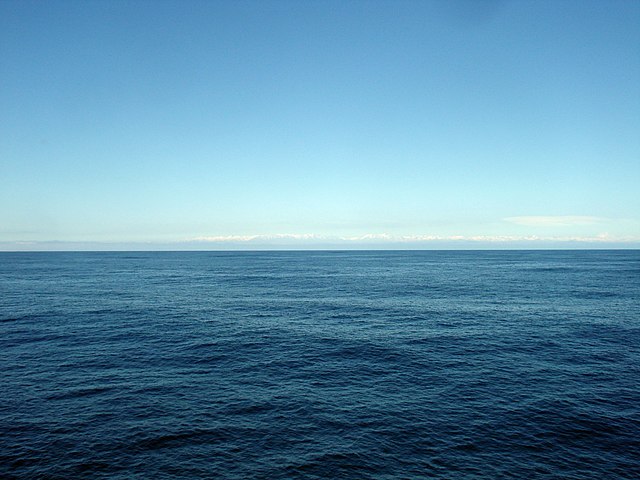
The Pacific Ocean. Photo: Wikimedia commons
Life on the planet is believed to have begun in the oceans more than four billion years ago. Today, oceans contain somewhere between 500,000 and 10 million species, from whales to bacteria, most of it is unknown to science. Oceans absorb carbon dioxide, cushioning the planet against global warming and absorb more heat than land. Ocean currents help maintain the seasons.
For humanity, oceans are a source of incredible beauty, wonder, and knowledge. They provide human society with one-fifth of the protein we eat (and more in many areas).
Climate Change
The ocean as we know it today is dying. Global warming is responsible for the acceleration and increasingly severe destruction of the oceans. For example:
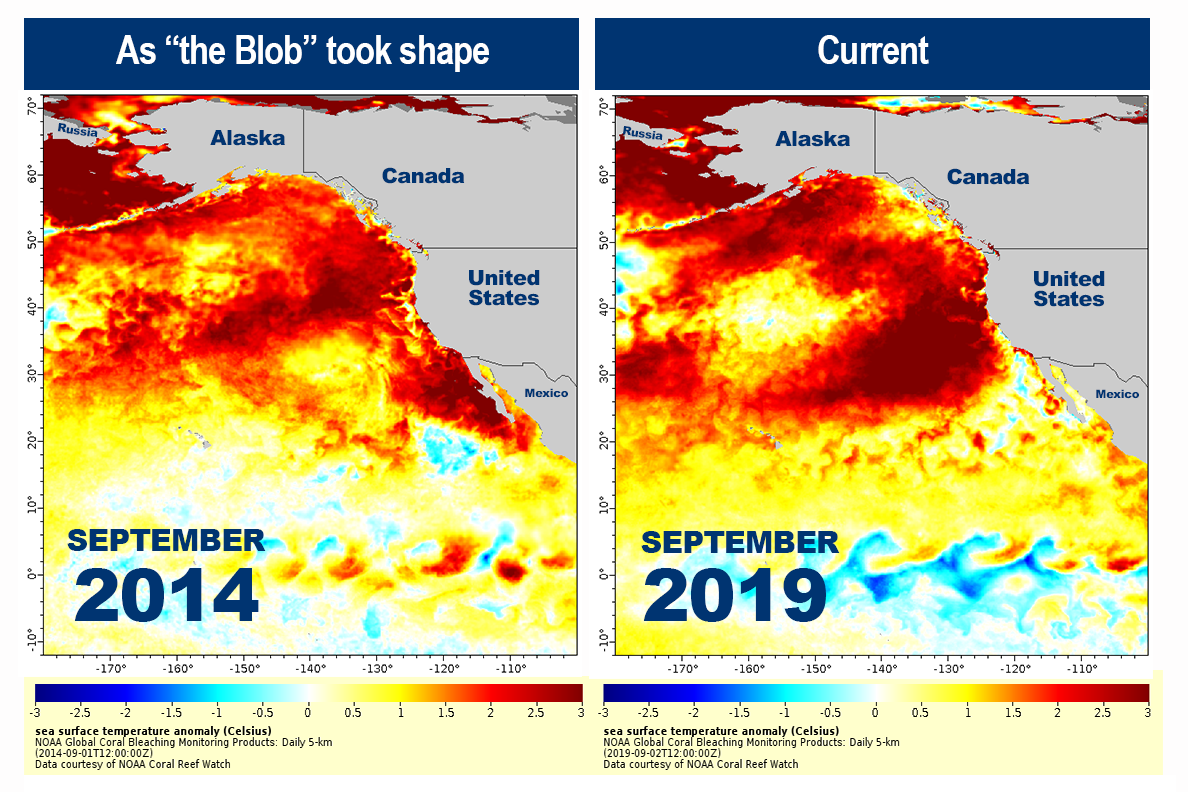
In 2014-16 and again in 2019, the ocean waters off the West Coast were hit with hotter-than-usual temperatures in a marine heat wave that came to be known as “the Blob.” The 2014-16 heat wave was the largest marine heat wave since NOAA satellites started keeping track in 1981. The 2019 marine heat wave was the second-largest. (NOAA Coral Reef Watch)
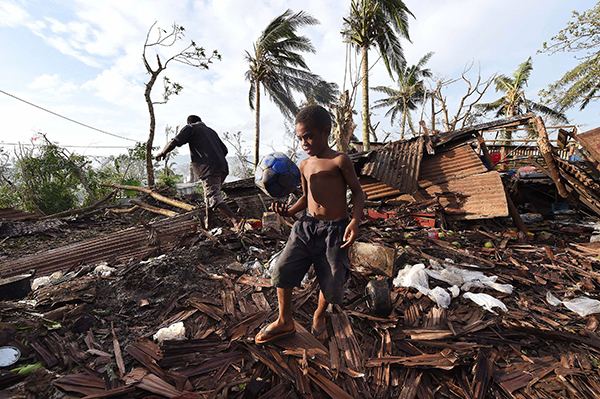
Warmer oceans contribute to the intensity of tropical storms, an event happening much more quickly than previously thought. Here the aftermath of 2015 Cyclone Pam, which destroyed 90 percent of the buildings in the nation of Vanatu. (Photo: AP)
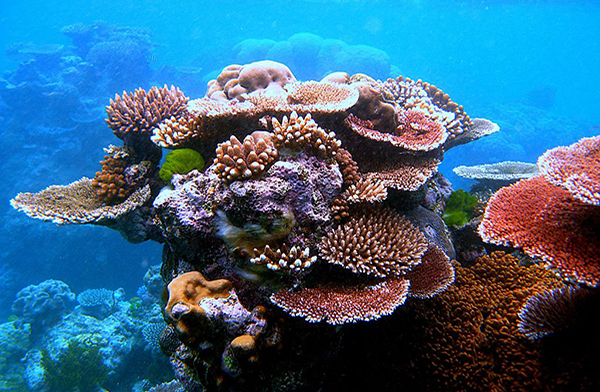
2010: a variety of corals from a part of the Great Barrier Reef near Cairns, Queensland, Australia. Photo: Toby Hudson (Wikimedia Commons)
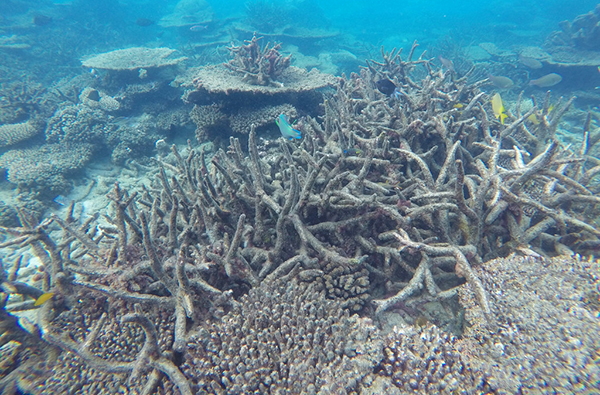
2016: dead staghorn coral killed by bleaching on the northern Great Barrier Reef. Photo: Greg Torda, ARC Centre of Excellence for Coral Reef Studies/Creative Commons
An Unsustainable System
Pollution, unsustainable fishing, and toxic waste are causing devastating outcomes in the planet’s oceans. Like climate change, this is rooted in the system of capitalism-imperialism. As Raymond Lotta wrote on the 50th anniversary of Earth Day, “The economic models and pricing system of capitalism cannot capture the true measure of these elements of nature. They systematically ‘undervalue’ nature because, historically, these benefits of ecosystems are provided ‘free’ as ‘public goods’—and have been systematically overexploited as imperialism relentlessly and massively commodifies more and more of nature.”
Look at what is known as the Great Pacific Garbage Patch in the Pacific Ocean, where ocean currents have caused massive amounts of plastic and other garbage, twice the size of Texas, to accumulate. This is one of five similar sites worldwide. As plastics break down, they work their way into every part of oceans, from the surface to the ocean floor. Turtles, seabirds, fish, and marine mammals eat or get entangled in the plastic garbage. Plastic contains toxins, which get concentrated in smaller animals and the animals that eat them. At the top of that food chain are human beings. Studies have found that humans today have plastics in every organ of our bodies.
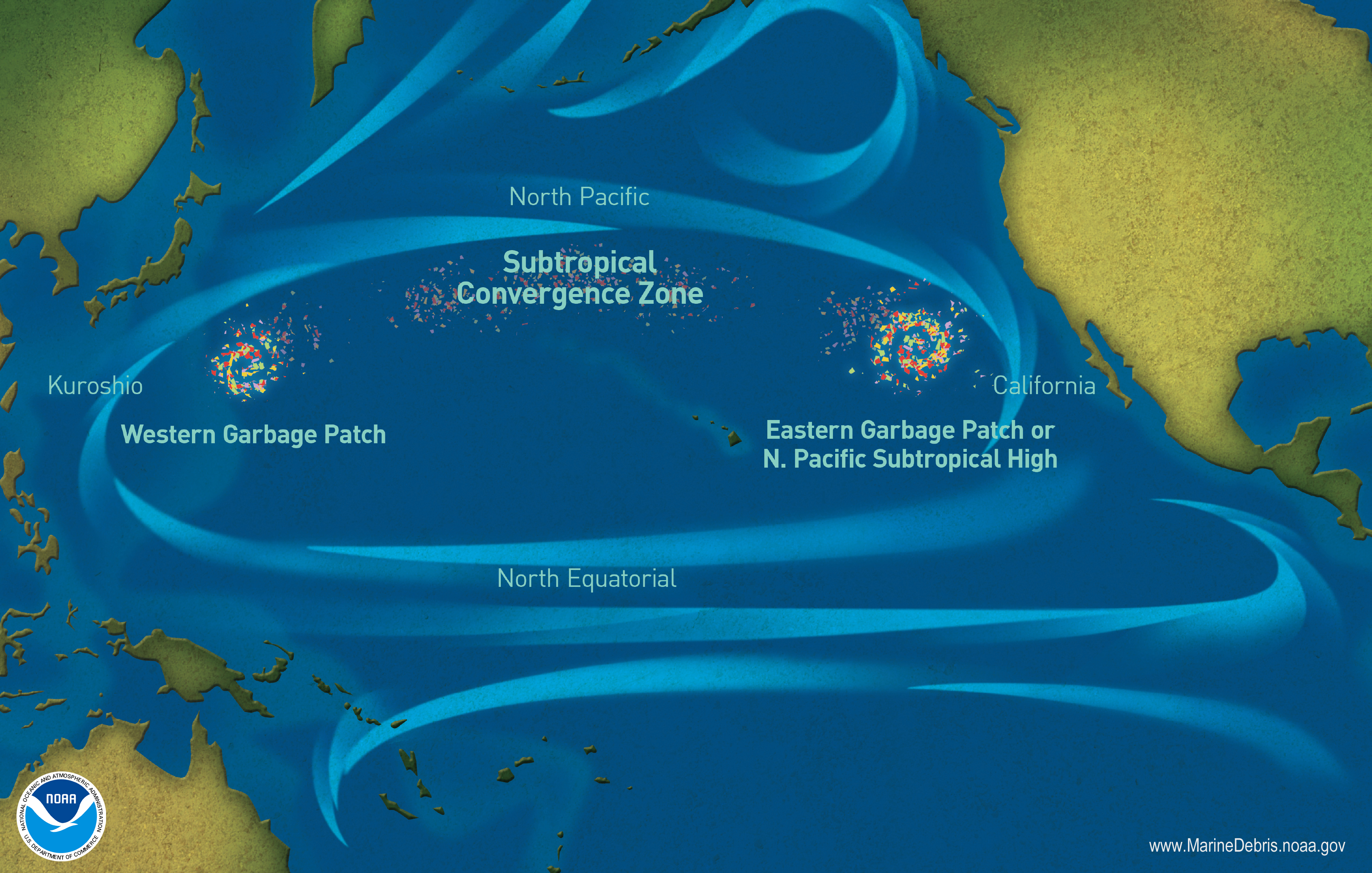
Pacific Garbage Patch concentrations (Map: NOAA)
Even though the environmental harm of plastics has been long known, plastic production has continued to rise, often for useless things such as packaging of consumer goods. Between 2000 and 2010, more plastic was produced than in the previous century. And production of plastic is expected to increase by 40 percent in the next 10 years.
Look at the dead zone that forms every summer off the Gulf of Mexico. Dead zones form when chemicals, such as those used as fertilizer in industrial agriculture, run off into rivers that flow into the Mississippi and eventually into the Gulf. There they cause algae to bloom on the surface, which decreases the oxygen levels below. Thousands of dead fish wash ashore. Fifty years ago, there were 50 dead zones around the world. Today, this has grown to more than 400.
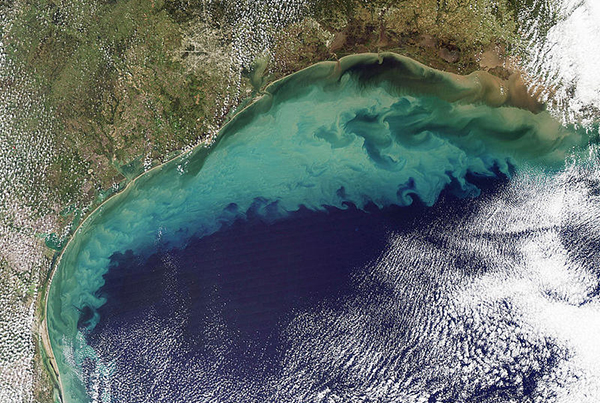
A satellite image of the Gulf of Mexico showing sediment flowing into it from the Mississippi River. This year’s dead zone in the gulf could be one of the largest on record. (Photo: Wikimedia Commons/NASA Earth Observatory)
Nonsustainable fishing is also harming the ocean ecosystem. In 2015, one-third of ocean fish stocks were being commercially fished faster than the stocks could replenish. When too many fish are taken out of the ocean, an imbalance is created that leads to a loss of other important marine life—including vulnerable species like sea turtles and corals. Dwindling stocks of fish put millions of people living in poor coastal communities at risk of hunger and loss of their livelihood.
At the same time as the burning of fossil fuels is wrecking the climate, offshore drilling and the spills that can result are damaging to ocean life. The 2010 Deepwater Horizon oil spill from BP-operated wells in the Gulf of Mexico released 200 million gallons of oil. This disaster fouled at least 1,300 miles of Gulf shoreline, endangered public health, and killed 10s of thousands of birds, sea turtles, dolphins, and fish. In addition to large spills like BP’s, there are many smaller spills. Just in U.S. federal waters, there were 6,500 oil spills between 2007 and 2017. Aside from the devastating impact of oil spills, these wells produce many forms of toxic waste, even when they are running as designed.
We need a society that is based on maintaining a sustainable relationship with the natural world. This is something that capitalism cannot do.
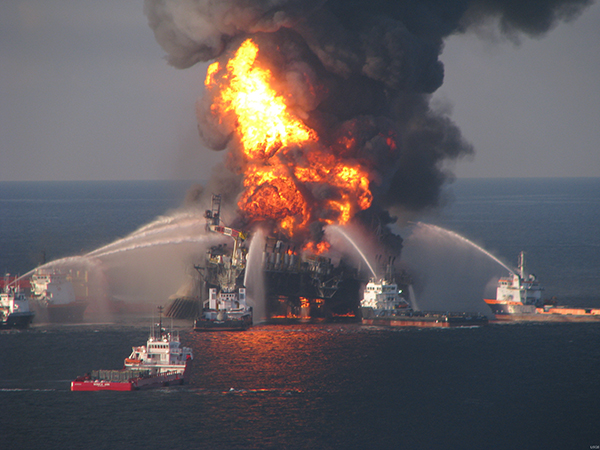
Trump overturned regulations put in place after the BP oil spill that were meant to prevent future spills. And he has proposed changes that would allow oil drilling in all federal waters. Here, aftermath of BP- Deepwater Horizon oil spill, an industrial disaster, April 2010, in the Gulf of Mexico. (Photo: Wikimedia Commons)
Trump and the Oceans
Much of the environmental devastation in the oceans is the direct result of climate change caused by the burning of fossil fuels. This did not begin with Trump; it is the result of a system of capitalism-imperialism, its cutthroat competition, and its quest for profit. But Trump is greatly accelerating the process.
Trump has denied the science of climate change, pulled out of the Paris climate accord, promoted and deregulated coal power plants, repealed rules that would have reduced automobile emissions, cut regulations on methane, approved contested pipelines, and expanded drilling coal mining and fracking. And Trump has damaged the oceans in other ways:
- On June 5, Trump opened the Northeast Canyons and Seamounts Marine National Monument, the only protected marine monument, to commercial fishing. The site is home to a rare species of cold-water coral, some of which are more than 4,000 years old, as well as diverse systems of life that exist in its three undersea canyons and four extinct volcanos.
- Last week, Trump appointed two climate science deniers and a campaign aide to top positions in the National Oceanic and Atmospheric Administration (NOAA), the leading U.S. agency studying climate change and the ocean environment. These appointments presage what would likely happen if Trump remains in power: turning an important scientific body into a hack center of climate change denial.
- On June 19, 2018, Trump signed an executive order overturning the National Ocean Policy (which Republicans called “Obamacare for the Ocean”) and replacing it with a policy that barely mentions climate change and focuses not on ocean conservation but on economic development, including mining the sea floor.
- Trump overturned regulations put in place after the BP oil spill that were meant to prevent future spills. And he has proposed changes that would allow oil drilling in all federal waters.
- Trump is a big-time supporter of the U.S. plastics industry. He constantly ridicules efforts to reduce single-use plastics. When he does talk about plastic pollution, he blames other countries (especially China), even though the U.S. produces much more plastics per capita than China.
***
Ocean Endangered Species
While much less is known about extinction of marine species than their land-based relatives, a 2019 study in the journal Nature found that ocean species were more vulnerable to temperature change than land species.
Part 1 of this series (on the Great Barrier Reef) covered the situation with coral reefs, which are threatened by rising ocean temperatures. These “rainforests of the sea” could become extinct in coming decades.
***
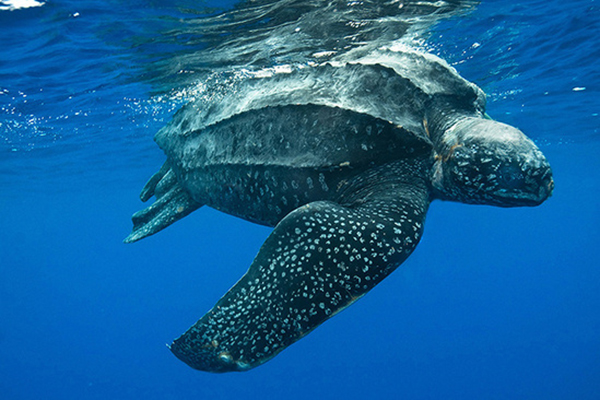
Leatherback sea turtle
The leatherback sea turtle is the largest sea turtle, reaching a length of seven feet. They migrate up to 10,000 miles each year. In the last 30 years, the population of these turtles has declined by 90 percent.
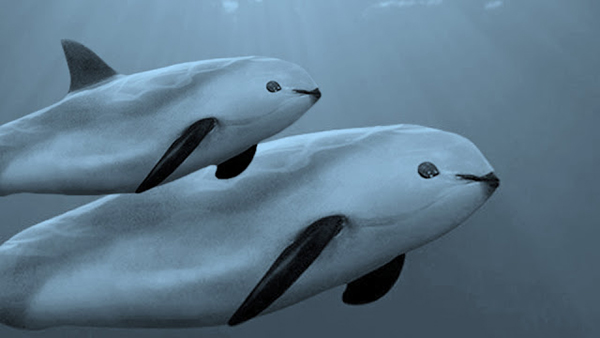
Vaquita
The vaquita is a small porpoise found only in the northern Gulf of California, off Mexico. Fewer than 20 of these animals remain, down from more than 600 in 1997. They have been caught in fishing nets and more recently have been hunted because their swim bladders are believed to have medicinal value.
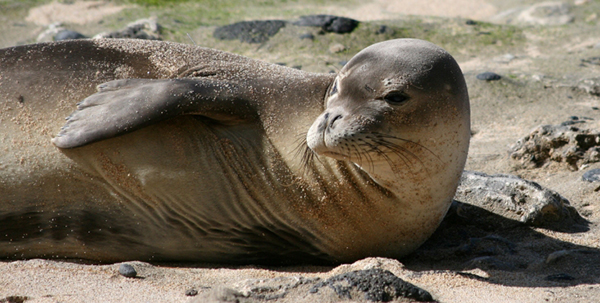 Hawaiian monk seal
Hawaiian monk seal
The Hawaiian monk seal, known to native Hawaiians as ilio-holo-i-ka-uaua, or “dog that runs in rough water,” is being threatened by rising sea water that is destroying the beaches that the seals need to rest and to rear their young. The seals are also killed when they get caught in fishing nets. There are only around 1,000 of these seals left.
Read the series:
The Planet Cannot Survive Four More Years of Trump!
Part 1: The Great Barrier Reef and the Amazon
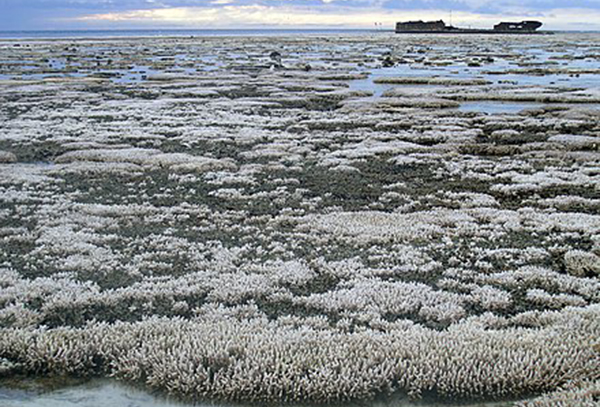
Bleached coral, the Great Barrier Reef
Part 2: The Arctic: Land of (Melting) Ice and Fire
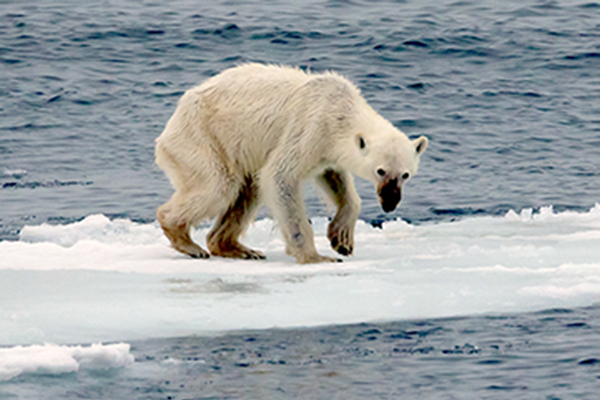
Starving polar bear (Photo: Wikimedia commons)
See also:
50 Years Since Earth Day 1:
Reflections on the Catastrophe That Is Capitalism-Imperialism
by Raymond Lotta
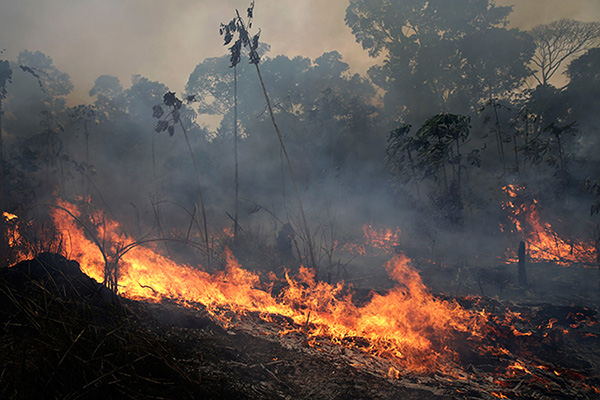
Jacundá National Forest, part of the Amazon Rain Forest, August 25, 2019 (Photo: AP)
This series has shown that the global environment is on a precipice, and many ecosystems are facing the possibility of collapse. We have seen species on the edge, from the rainforests to the Arctic to the oceans. As has been emphasized throughout this series, even small changes in an ecosystem can have large effects on the entire system. Because all life is bound together, changes to the ocean ecosystem will affect all other species on the planet, including human beings.
Right now, humanity faces a choice with huge implications not only for humanity, but for the planet. Four more years of Trump’s science-denying, nature-destroying, fossil-fuel-emitting fascist regime will be a nightmare for the planet. We must use all available nonviolent means to prevent Trump/Pence from consolidating fascism. AND ultimately, to save the planet, we need to overthrow the capitalist-imperialist system and put in place a system of socialism moving on to communism that is based on, among other things, “Protecting, preserving, and enhancing the ecosystems and biodiversity of the planet for current and future generations.” (From the Constitution for the New Socialist Republic in North America, authored by Bob Avakian.)
Get a free email subscription to revcom.us:


